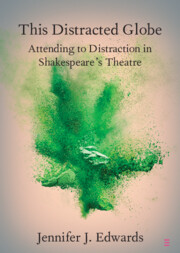Element contents
This Distracted Globe
Published online by Cambridge University Press: 04 May 2023
Summary
- Type
- Element
- Information
- Online ISBN: 9781108979986Publisher: Cambridge University PressPrint publication: 25 May 2023
References
Primary Sources
Secondary Sources
- 12
- Cited by

